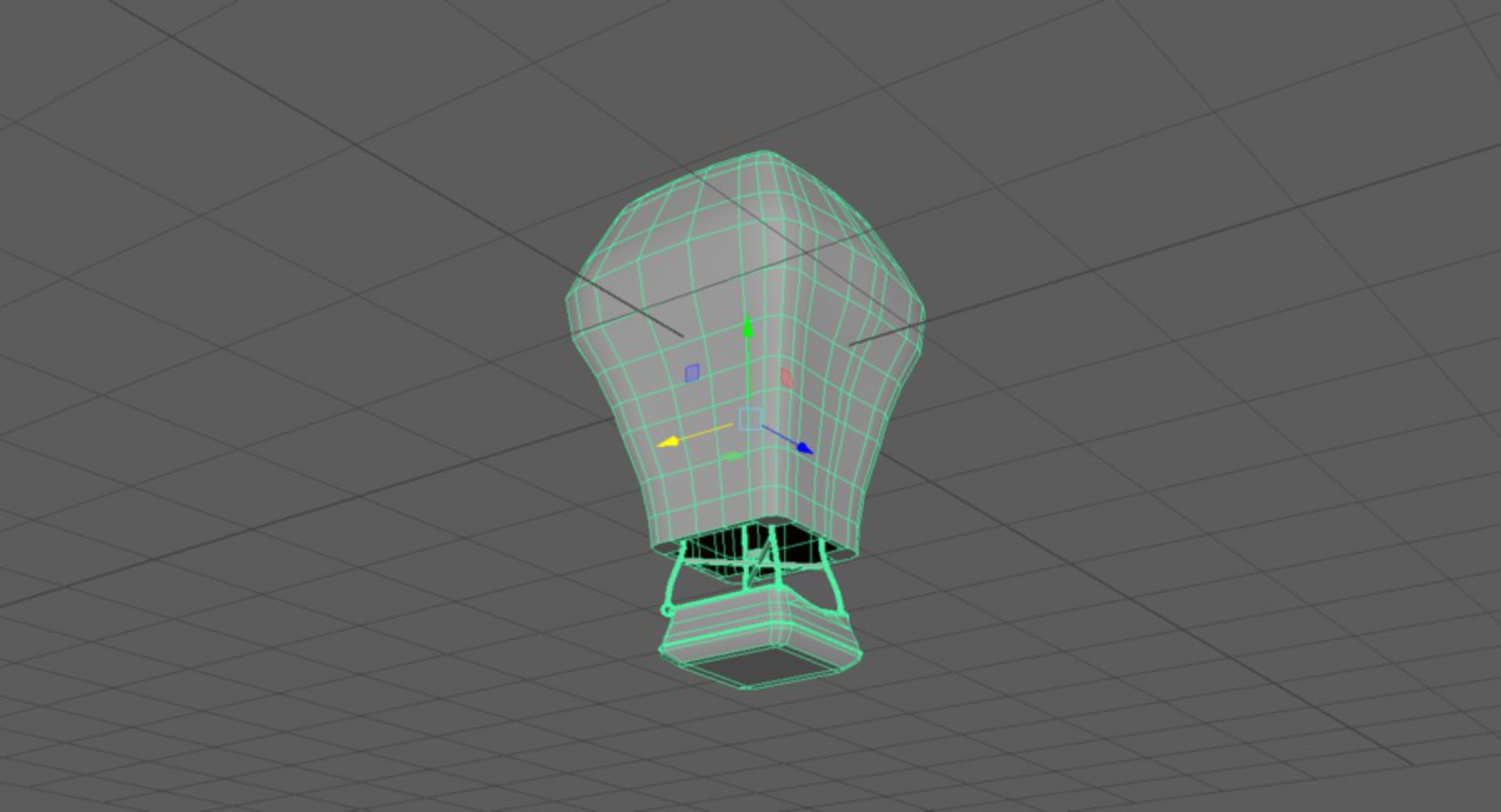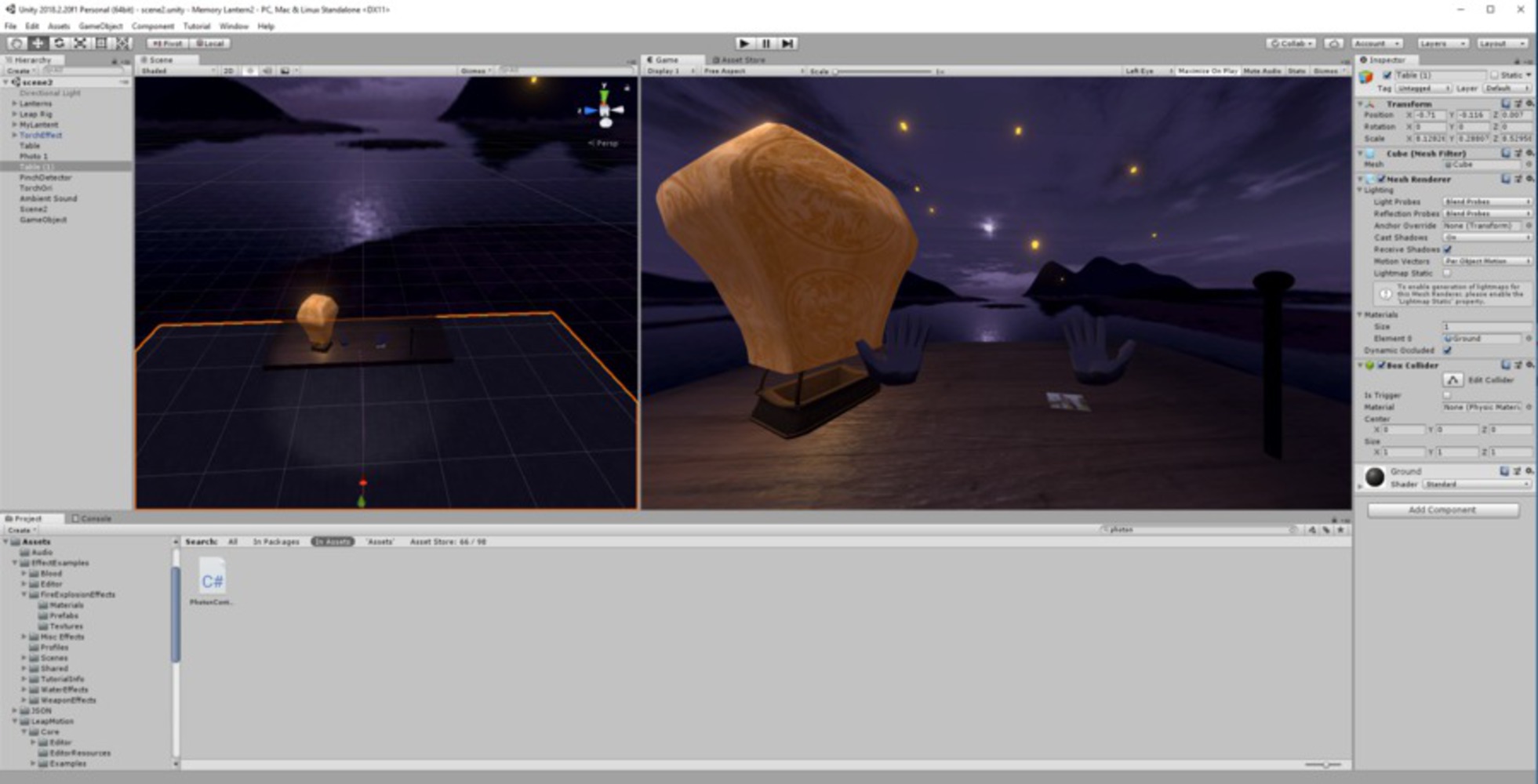Prototype
Describe your experience/working prototype: What did you create, how, etc.? What tools and technologies were involved? Include appropriate content and illustration (e.g. a concept video, a video of the device in operation, diagrams, code, etc.)
Our experience takes place in a private but shared space through the virtual reality environment and involves the creation of three separate components that will come together to work as a whole. Using Unity to create the digital, ritual space, a scene was built that situates users in a beautiful, isolated location. Users are able to pull in digital memories, such as photographs, that are perhaps meaningful, but cause them pain or stress or hold them back from moving on with their lives. With gesture control, users can pick up their digital memory, interacting with the digital memory in a pseudo-tangible way to look at and react to once more. Attaching the digital memory to a waiting sky lantern, the user can raise their hands and release the memory from their lives. Looking into the sky, the user can see all other lanterns that have been released into the sky, by any other user who has ever entered this VR environment. This helps the user feel like they are part of a collective human experience while they are vulnerable and revisiting an unhappy memory, turning a potentially isolating, lonely experience into a warmer, unifying experience.
This experience is supported with a tangible object, a lantern representing the experiences inside the digital world. When a user, anywhere in the world, releases a memory in the VR environment, the lantern’s Particle base will light up and chime. Lights will then project from the top of the lantern, mimicking the sky within the VR environment. For anybody in the vicinity of the lantern, this physical embodiment of the digital release will build empathy for the general relationship and personal struggles of humans. If they are themselves struggling with moving on, it will further serve as a subtle form of encouragement.
For the lantern itself, we had some rough sketches from our first ideation meeting, precedents from children’s night light toys, and constraints based on the technology we needed to include. The Hue lightbulb we planned to use and the Particle board with LED string dictated the dimensions necessary for our object. With the dimensions set, it was just a matter of working within those constraints to come up with a shape that would be reminiscent of a sky lantern, allowing ritual experiencers to make a direct connection between the VR experience and the tangible object. We created the pattern with Illustrator, figured out allowances based on the width of our acrylic material (1/8 inch), adjusted the pattern appropriately and cut all pieces out with a laser cutter, assembling them with a fast-acting plastic glue.
The Particle board within the base section of the lantern controls a speaker and a string of LEDs wired in parallel. Its main function is controlled via the Particle API and is remotely called by the VR program every time a lantern is released. Once this call happens, the Particle plays a bell chime sound with the speaker and smoothly turns the LEDs on and off over the course of several seconds. To connect this action with the VR experience, we mirrored the chime sound within the virtual world.




